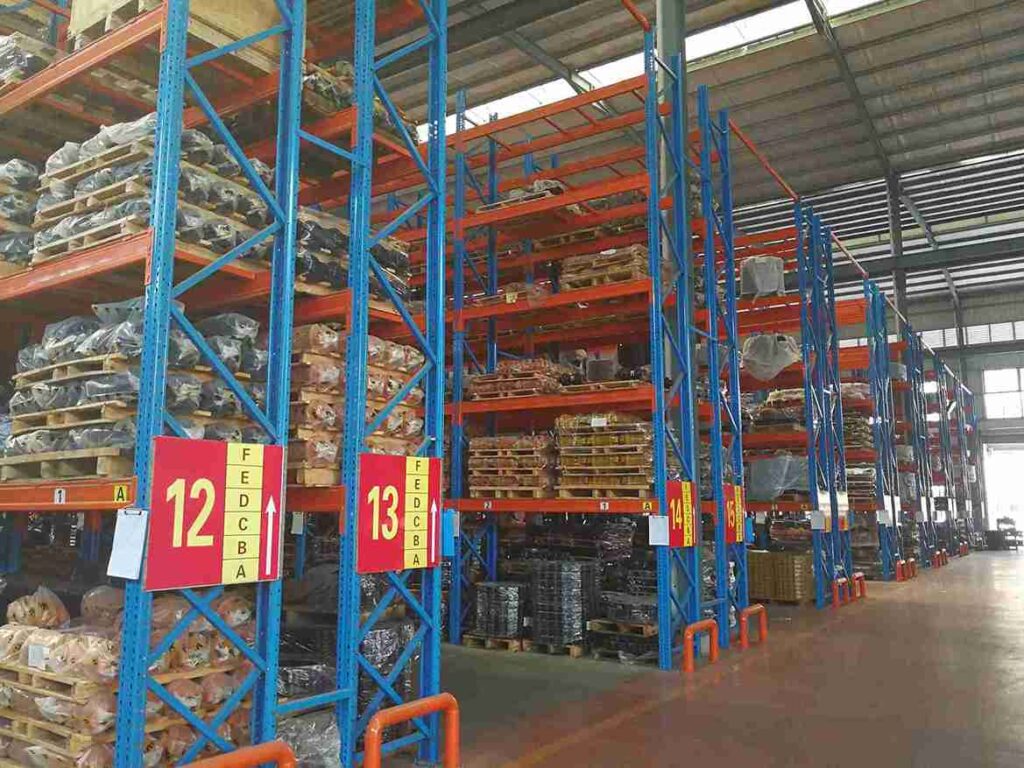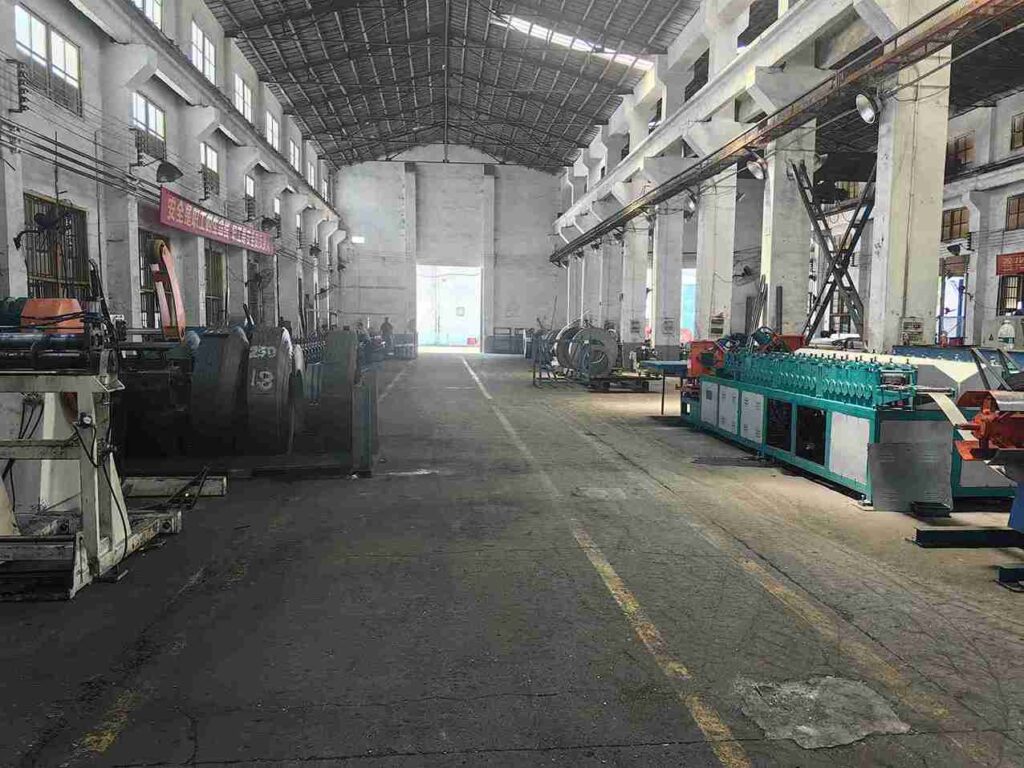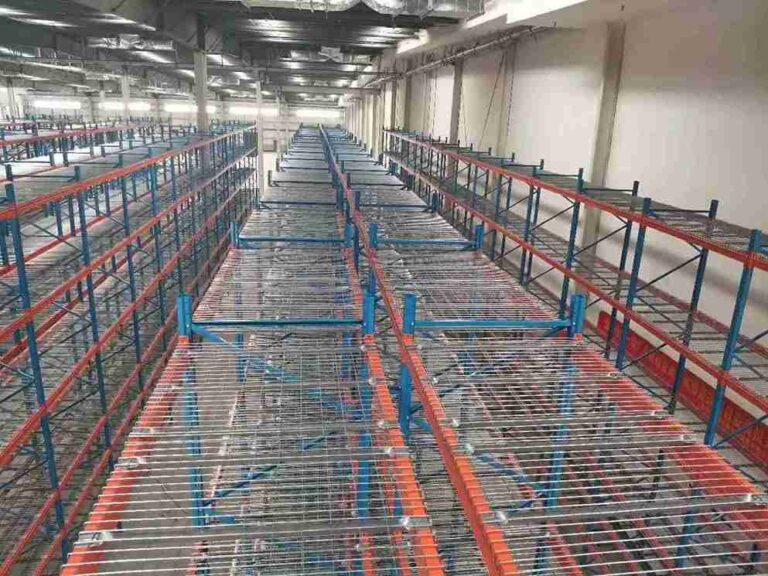📐 "First 50 Enterprise Queries Get Custom 3D Warehouse Design" Plan

The Definitive Guide to Beam Racking Inspection Frequency: A Strategic Imperative for Warehouse Operations
In the relentless environment of modern logistics and warehousing, operational uptime is synonymous with profitability. The structural integrity of pallet racking systems forms the silent, often overlooked, backbone of this entire enterprise. Among the most critical, yet frequently debated, operational questions is the one concerning the optimal beam racking inspection frequency. This is not a matter of simple compliance; it is a complex, risk-based strategic decision that directly impacts safety, asset preservation, and the bottom line.
A meticulously calibrated beam racking inspection frequency protocol serves as the most cost-effective insurance policy against catastrophic failure. This exhaustive guide delves deep into the engineering principles, regulatory frameworks, and operational variables that dictate a truly effective beam racking inspection frequency, providing warehouse and logistics managers across Southeast Asia, the Middle East, Africa, and Latin America with a actionable blueprint for safeguarding their assets.

The High Stakes of Neglect: Why Beam Racking Inspection Frequency is Non-Negotiable
Underestimating the importance of a rigorous beam racking inspection frequency is a gamble with untenable odds. The consequences of a failed or neglected inspection schedule are not merely theoretical; they are severe, multifaceted, and financially devastating.
Catastrophic Structural Collapse: The most dire outcome of an inadequate beam racking inspection frequency is a partial or total racking collapse. This event goes beyond bent steel; it destroys valuable inventory, creates a massive debris clearance project, and brings all operations within the affected zone to an immediate and prolonged halt. The domino effect on supply chain commitments can be irreversible.
Crippling Operational Downtime: From a financial perspective, downtime is often the single greatest loss. When a section of racking is red-tagged due to discovered damage, the flow of goods stops. Order fulfillment ceases, shipping schedules are disrupted, and customer trust erodes. The cost of lost productivity per hour can swiftly surpass the annual budget allocated for a comprehensive beam racking inspection frequency program.
Severe Safety and Liability Exposure: Compromised racking is a lethal workplace hazard. Falling beams and pallets pose a direct threat to employee lives. Beyond the human tragedy, this exposes the company to significant legal liability, surging insurance premiums, and severe penalties from occupational health and safety authorities. In emerging markets, where regulatory enforcement is intensifying, a documented and robust beam racking inspection frequency schedule is a primary defense in demonstrating due diligence.
The Insidious Nature of Progressive Damage: A minor impact from a forklift, if undetected due to a lax beam racking inspection frequency, does not remain minor. The initial dent or bend creates a stress concentration point. Under repeated dynamic loading, this flaw can propagate, leading to a sudden and unpredictable failure. What a proper beam racking inspection frequency would have caught and remedied for a minimal cost evolves into a major structural replacement.

Deconstructing the Standards: The Regulatory Basis for Beam Racking Inspection Frequency
Globally recognized standards form the foundation upon which any serious beam racking inspection frequency program must be built. While local regulations may have specific nuances, they largely derive from these established international benchmarks, making them universally relevant.
The Three-Tiered Inspection Hierarchy: A Comprehensive Defense-in-Depth Strategy
Authorities like the UK’s Storage Equipment Manufacturers’ Association (SEMA) and the US Occupational Safety and Health Administration (OSHA) advocate a multi-layered approach to beam racking inspection frequency. This model ensures that inspections occur at different levels of detail and responsibility, creating a robust safety net.
Tier 1: Operational Visual Checks – The First Line of Defense
This tier is the most frequent and relies on the vigilance of frontline personnel. The beam racking inspection frequency at this level is continuous.
Who: Forklift operators, order pickers, and all floor staff.
Frequency: Daily, before each shift, and immediately following any noticed impact event.
Focus: Identifying obvious, recent damage. This includes fresh dents on upright frames, beams that have been dislodged, missing or loose connectors, and visibly damaged anchors.
Action: The culture must empower and require every employee to report damage instantly. This human element is irreplaceable in a high-beam racking inspection frequency environment.
Tier 2: Formal Visual Inspections – The Systematic Review
This is a scheduled, documented inspection conducted by a trained individual. The beam racking inspection frequency for this tier is typically weekly or monthly, based on risk.
Who: A designated warehouse supervisor, manager, or safety officer with specific training.
Frequency: In a high-traffic facility, a weekly beam racking inspection frequency is prudent. For lower-throughput operations, a monthly schedule may suffice.
Focus: A thorough walk-through of the entire storage system, checking for alignment issues, beam sag (indicating overloading), the condition of safety locks, and ensuring all previously tagged damage has been addressed.
Action: All findings must be formally logged, creating a valuable historical record of the system’s condition and the effectiveness of the beam racking inspection frequency protocol.
Tier 3: Expert “Written Report” Inspections – The Gold Standard
This is the most critical level of inspection, conducted by a “technically competent person.” The beam racking inspection frequency for this tier is most commonly cited as annual, but this is a baseline, not a universal rule.
Who: A certified racking inspector (e.g., SEMA certified) or a qualified engineer from a reputable supplier.
Frequency: Annually for standard risk, but semi-annually or even quarterly for high-risk environments. Determining this expert-level beam racking inspection frequency is a core part of the risk assessment.
Focus: A hands-on, detailed examination of every component. The inspector uses tools to measure deflection, check column plumb, identify microscopic cracks, and assess corrosion, providing a quantitative analysis that visual checks cannot.
Action: The deliverable is a formal written report, a legal document that details the racking’s state, classifies any damage, and prescribes necessary corrective actions. This report validates the entire beam racking inspection frequency program.

Beyond the Calendar: The 7 Dynamic Factors That Dictate Your True Beam Racking Inspection Frequency
The prescribed annual beam racking inspection frequency for Tier 3 is a starting point for a generic warehouse. A one-size-fits-all approach is inadequate. A truly resilient operation tailors its beam racking inspection frequency based on a rigorous and ongoing risk assessment, considering these seven pivotal factors:
Equipment Traffic Intensity and Type: The beam racking inspection frequency must be inversely proportional to the skill of the operators and the density of traffic. A facility using a mix of manual forklifts and AGVs requires a different beam racking inspection frequency calculus than one using only guided narrow-aisle trucks. AGVs, while precise, can still cause damage, and their integration necessitates a specific beam racking inspection frequency strategy.
Forklift Operator Training and Proficiency: The human element is a massive variable. A warehouse with a high rate of operator turnover or insufficient training must implement a more aggressive beam racking inspection frequency to mitigate the inherently higher risk of impact damage.
Inventory Dynamics and Load Profile: The beam racking inspection frequency must account for how inventory behaves. A high-velocity FMCG warehouse subjects its racking to constant, dynamic forces—loading and unloading—which accelerates wear and tear compared to a archival storage facility. Furthermore, inconsistent pallet sizes and weights create uneven stress, demanding a more vigilant beam racking inspection frequency.
Ambient Environmental Conditions: The local environment heavily influences the required beam racking inspection frequency. In the high humidity of Southeast Asia, corrosion is a relentless threat. In coastal regions of the Middle East, salt spray can rapidly degrade steel. In these environments, the beam racking inspection frequency must be increased to monitor for material thinning and connector corrosion.
System Age, Design, and Modification History: An older system, or one that has been repeatedly reconfigured, has a lower tolerance for damage. Its fatigue life is diminished. For such systems, the beam racking inspection frequency should be increased, and the inspections must be exceptionally thorough, paying close attention to previous modification points and cumulative wear.
Historical Damage and Repair Records: A racking component with a history of damage is a known vulnerability. A facility’s beam racking inspection frequency and focus should be strategically adjusted to monitor these previously compromised areas more closely, as they are prime candidates for progressive failure.
External Forces: Seismic Activity and Vibration: In seismically active zones across Latin America and Central Asia, or in facilities adjacent to heavy machinery that induces constant vibration, the metallurgical fatigue on the racking is significantly accelerated. This reality demands a substantially higher beam racking inspection frequency conducted by experts who can identify stress fractures invisible to the naked eye.
From Theory to Practice: Architecting Your Customized Beam Racking Inspection Frequency Schedule
Translating the risk assessment into a practical schedule moves an operation from a reactive to a proactive posture. Here is a model for establishing a customized beam racking inspection frequency protocol:
Low-Risk Profile Facility: Characterized as archival storage, low-throughput with minimal traffic. Recommended beam racking inspection frequency: Tier 1 (Daily), Tier 2 (Quarterly), Tier 3 (Every 24 months).
Medium-Risk Profile Facility: A standard distribution center with trained operators and mixed equipment. Recommended beam racking inspection frequency: Tier 1 (Daily), Tier 2 (Monthly), Tier 3 (Annual).
High-Risk Profile Facility: High-throughput FMCG, cold storage (where steel embrittlement is a concern), or facilities with high operator turnover. Recommended beam racking inspection frequency: Tier 1 (Continuous/Per Shift), Tier 2 (Weekly), Tier 3 (Semi-Annual or Quarterly).
H2: The Anatomy of an Expert Inspection: A Deep Dive into the Technically Competent Assessment
Understanding what occurs during a Tier 3 inspection demystifies the process and underscores its value. When a qualified engineer conducts an inspection, it is a forensic audit of the racking’s structural health, far surpassing a simple visual check. The entire process is governed by a strict beam racking inspection frequency protocol designed to leave no component unchecked.
H3: Upright Frames: Scrutinizing the Vertical Load-Bearing Elements
The inspection of upright frames is meticulous. The specialist checks for:
Plumb and Alignment: Using precision levels and laser tools to detect any deviation from perfect verticality.
Column Damage: A detailed mapping of dents, especially in the high-impact zone (0-2 meters from the floor). The depth, location, and orientation of each dent are measured and evaluated against engineering tolerances to determine its effect on load capacity.
Baseplate and Anchor Integrity: Each anchor bolt is checked for torque and corrosion. The concrete floor around the baseplate is inspected for cracking or spalling, which indicates failure.
H3: Load Beams and Connectors: The Critical Interface
This is often the point of highest failure. The inspection focuses on:
Beam End Connectors: A close examination for deformation, cracking, or wear. The functionality of the safety lock is tested on a statistical sample of connectors.
Beam Deflection: The sag of the beam under a standard load is measured. Excessive deflection is a clear, quantifiable indicator of overloading and a key finding in any beam racking inspection frequency report.
Connector-to-Upright Engagement: The integrity of the connection is verified, ensuring the hook is fully seated and not bearing load on the very tip.
H3: Holistic System Evaluation
The inspector also assesses:
Load Notices: Verifying their presence, accuracy, and legibility.
Flue Spaces and Aisles: Confirming they adhere to the original design specifications and fire safety codes.
The effects of any adjacent construction or modifications to the building structure.
H2: The Indispensable Role of the Professional Inspector in the Beam Racking Inspection Frequency Ecosystem
While internal checks are vital, they cannot replicate the depth, objectivity, and expertise of a professional inspection. The inclusion of an external expert in the beam racking inspection frequency cycle is crucial for several reasons:
Unbiased Objectivity: The external inspector has no operational pressures to downplay damage, providing a truthful, unvarnished assessment.
Advanced Technical Expertise: These professionals are trained to identify failure modes and subtle signs of stress that are invisible to warehouse personnel.
Sophisticated Tooling: The use of ultrasonic thickness gauges, dye penetrant tests, and advanced alignment tools provides quantitative data that informs critical repair-or-replace decisions.
Legal and Regulatory Defense: The formal written report serves as a shield, demonstrating to insurers and regulators that the company has adhered to the highest standards of care in its beam racking inspection frequency practices.
H2: Synergizing Beam Racking Inspection Frequency with Automated Storage Systems
For warehouses incorporating automation, such as Automated Guided Vehicles (AGVs) or Automated Storage and Retrieval Systems (AS/RS), the concept of beam racking inspection frequency evolves. The racking is no longer a passive structure but an active component of an integrated system. In these high-value environments, the beam racking inspection frequency must be synchronized with the automation’s data systems. For instance, impact detection sensors on the racking can trigger an immediate, targeted inspection, creating a responsive, data-driven beam racking inspection frequency model that moves beyond a fixed calendar schedule. This integration is the future of proactive asset management.
H2: The Unassailable Business Case: Quantifying the ROI of a Rigorous Beam Racking Inspection Frequency
The investment in a professional beam racking inspection frequency program must be evaluated against the potential cost of failure. The numbers are starkly persuasive.
Cost of Expert Annual Inspection: $2,000 – $5,000 (for a medium-sized warehouse).
Modeled Cost of a Single Failure Event:
Racking Replacement: $15,000 – $75,000
Destroyed Inventory: $100,000 – $1,000,000+
Operational Downtime (at $15,000/hr): $360,000 for a 24-hour stoppage.
Regulatory Fines and Legal Costs: $50,000 – $250,000
Increased Insurance Premiums: $25,000+ annually for years.
The conclusion is inescapable: the allocated budget for a proper beam racking inspection frequency program is a minuscule fraction of the potential loss it prevents. It is not an expense; it is one of the highest-return investments a logistics operation can make.

Conclusion
Establishing and adhering to a scientifically determined, risk-based beam racking inspection frequency is a fundamental pillar of world-class warehouse management. It is a dynamic strategy that fuses regulatory compliance with operational intelligence and financial prudence. A robust beam racking inspection frequency protocol, encompassing daily employee vigilance, scheduled internal reviews, and mandatory expert-level assessments, transforms storage infrastructure from a passive asset into a actively managed, safety-assured component of the supply chain. In an era where efficiency and safety are paramount, there is no justification for deferring the implementation of a rigorous beam racking inspection frequency program. It is the definitive safeguard for personnel, inventory, and profitability.
Frequently Asked Questions (FAQs)
1. What specific qualifications should we look for when hiring a professional for the Tier 3 beam racking inspection frequency service?
Seek out inspectors with certifications from recognized bodies such as the Storage Equipment Manufacturers’ Association (SEMA) or its international equivalents. Alternatively, engineers from reputable racking manufacturers who have extensive field experience and specific training in structural integrity assessments are highly qualified. Always request proof of certification and professional indemnity insurance.
2. After a significant impact is recorded by a sensor or operator, what is the recommended immediate beam racking inspection frequency protocol?
The immediate beam racking inspection frequency protocol post-impact is critical. The area must be immediately isolated and offloaded. A formal Tier 2 inspection should be conducted to assess visible damage. However, depending on the severity, this must be followed by a targeted Tier 3 inspection by a competent person to evaluate potential hidden structural damage, such as stress fractures or compromised welds, that a visual check will miss.
3. How does the recommended beam racking inspection frequency differ for specialized systems like mobile pallet racking or cantilever racking?
The beam racking inspection frequency for these systems is often higher due to their mechanical complexity and dynamic nature. Mobile pallet racking requires frequent inspection of the carriage mechanism, tracks, and safety interlocks in addition to the standard racking components. Cantilever racking demands focused inspection on the column bases, arm connections, and the effects of torsional stress. A quarterly Tier 2 and semi-annual Tier 3 beam racking inspection frequency is a common starting point for such systems.
4. Are there any software or digital tools that can help manage and track our beam racking inspection frequency schedule and findings?
Yes, several Computerized Maintenance Management Systems (CMMS) and dedicated asset integrity platforms are available. These systems allow managers to schedule inspections automatically, log findings with photos, track the status of repairs, and generate historical trend reports. This digital management is invaluable for auditing the effectiveness of your beam racking inspection frequency program and demonstrating compliance.
5. When expanding a facility and integrating new racking with old, how does this affect our established beam racking inspection frequency?
Integration is a high-risk scenario. The entire integrated system, both old and new, should immediately undergo a comprehensive Tier 3 inspection. The beam racking inspection frequency for the entire facility may need to be elevated to the standard of the higher-risk (older) component until its long-term performance and integration integrity are confirmed. This conservative approach is essential for managing the inherent risks of mixing systems with different wear histories and potentially differing design standards.
If you require perfect CAD drawings and quotes for warehouse racking, please contact us. We can provide you with free warehouse racking planning and design services and quotes. Our email address is: jili@geelyracks.com




